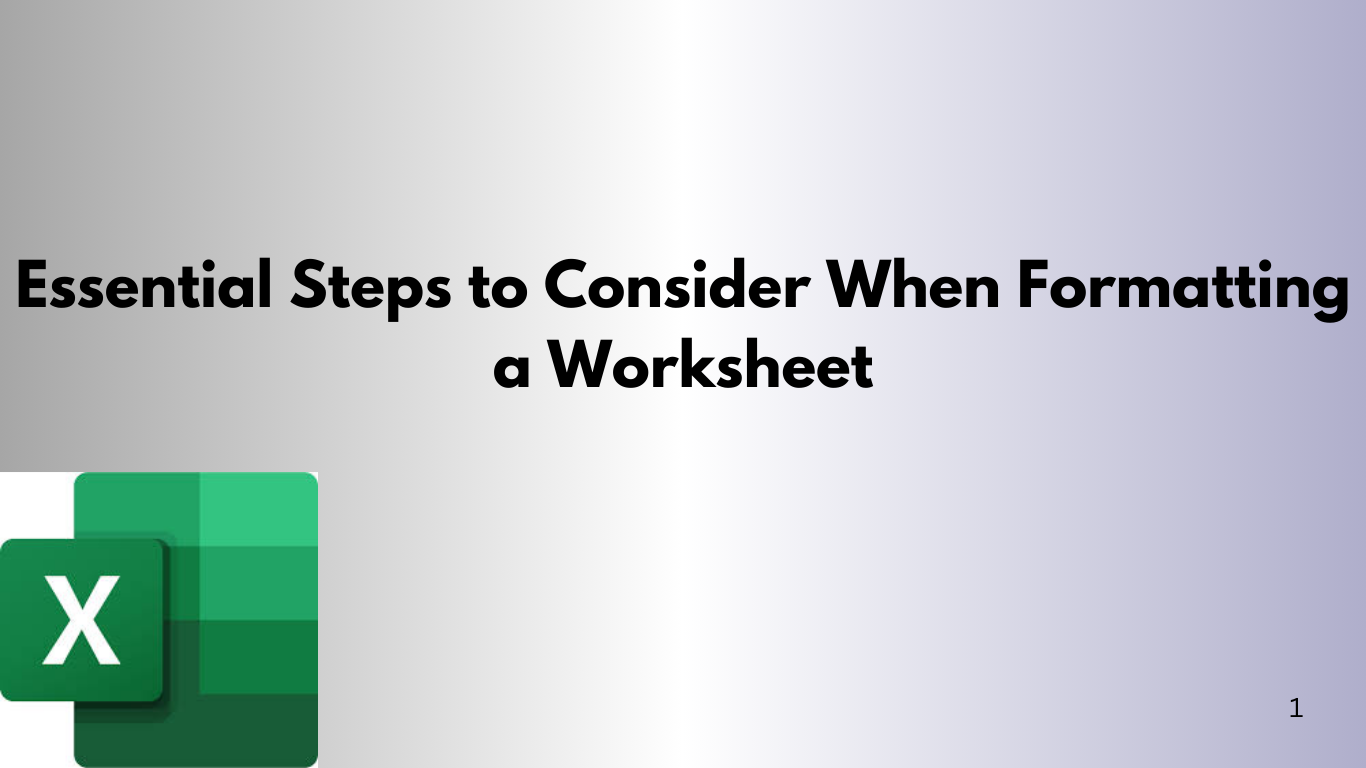Formatting a worksheet is crucial for clarity and ease of use. It can turn a messy document into a professional tool. We'll cover the key steps to format a worksheet effectively, with examples to show how these tips work.
1. Choose the Right Layout and Structure
The first step is to decide on the layout. This includes organizing your content and how users will interact with it.
Example: For a financial budget worksheet, use separate columns for income, expenses, and savings. Rows can help break down each category, making data input easier.
Scenario: When creating a math worksheet, organize content into sections for addition, subtraction, and multiplication. Each section should have enough space for answers.
Tip: Keep it clean and consistent. Use a grid layout with large cells for text or numbers. For text-heavy worksheets, ensure margins are big enough to avoid overcrowding.
2. Use Clear and Consistent Headings and Subheadings
Headings guide users and show what each section is about. Using headings and subheadings consistently makes content easy to navigate.
Example: Use headings like “Early Civilizations,” “Middle Ages,” and “Modern Era” for a historical facts worksheet. This helps users find information quickly.
Scenario: For a sales tracking worksheet, use headings like “Week of [Date],” “Employee Name,” “Sales Target,” and “Achieved Sales.” Clear headings help employees know where to write data.
Tip: Use bold fonts for headings and smaller fonts for subheadings. This makes sections visually distinct and guides the reader's attention.
3. Use Color and Shading Sparingly
Colors can make sections stand out, but too much can clutter a worksheet. Use colors to highlight important information without overwhelming the reader.
Example: Use different colors for income and expenses in a budget worksheet. This makes it easy to scan and understand.
Scenario: For a time tracking worksheet, use light gray for time-in and time-out columns. Leave the hours worked section white. This subtle color difference helps users focus on inputting data.
Tip: Limit colors to 2-3 and use them for important sections. Avoid bright or distracting colors.
4. Incorporate Clear Instructions and Labels
Always include clear instructions where necessary. This is especially important for complex worksheets or ones that require data entry. Instructions help guide users through how to properly use the worksheet and ensure they're filling it out correctly.
Example: For a worksheet on filling out tax information, instructions could read: “Please fill in your gross income in Column B and your deductions in Column C. Total your deductions in Column D.”
Scenario: A teacher might design a worksheet for students to practice spelling. At the top of the worksheet, they could add an instruction like, “Write each of the following words three times in the boxes below.”
Tip: Keep instructions concise, and if applicable, provide examples. Use different font styles like italics or bold for instructions to make them stand out.
5. Ensure Proper Alignment and Spacing
Proper alignment and spacing can drastically improve the readability of your worksheet. Avoid crowded sections by making sure your text, numbers, and images are aligned and spaced in a way that doesn't overwhelm the reader.
Example: In a data entry worksheet, align all numbers to the right, so users can easily compare figures. Text can be left-aligned, making it easier to read.
Scenario: If you’re formatting a to-do list or task tracker, make sure there’s enough space between each task entry. A crowded list can be hard to navigate, especially if tasks are long or detailed.
Tip: Use consistent spacing between rows and columns. Ensure that cells are large enough to fit the data, and use padding to avoid text bumping up against the borders of the cells.
6. Incorporate Data Validation and Formulas (If Applicable)
If your worksheet involves calculations or data entry, incorporating formulas and data validation can save time and reduce errors. This is especially true for worksheets in accounting, budgeting, or project management.
Example: In a sales tracking worksheet, you could use formulas to automatically calculate total sales, commissions, or taxes. You might also set data validation to only allow certain types of input (like dates or numbers).
Scenario: For a student attendance worksheet, you could use checkboxes for each student’s attendance status (present, absent, etc.). This helps automate data entry and keeps the sheet cleaner and more efficient.
Tip: When using formulas or data validation, ensure that users understand how to interact with the worksheet. Label your input fields clearly and test your formulas to ensure they work correctly.
7. Test the Worksheet
Before finalizing and sharing your worksheet, it’s crucial to test it for usability. Make sure everything is functioning as expected—formulas, data entry fields, and formatting. Also, check how the worksheet looks on different devices or when printed.
Example: If you’ve created a worksheet for students, test it by filling in sample data. Check if the text is readable, the formatting remains consistent, and all the cells resize properly.
Scenario: A payroll worksheet needs to be tested to ensure that all tax rates are calculated correctly and that input fields accept only valid data (e.g., employee hours, payment rates).
Tip: Ask a colleague, friend, or classmate to use your worksheet before finalizing it. They may catch things you missed or suggest improvements.
Conclusion
Formatting a worksheet isn't just about making it look good—it’s about creating an easy-to-use tool that serves its purpose efficiently. By focusing on layout, headings, color usage, instructions, alignment, data validation, and testing, you can design a worksheet that’s both functional and user-friendly.
Remember: Whether you're designing a worksheet for education, business, or personal use, always consider how the user will interact with it. A little attention to detail in the formatting process can save a lot of time and confusion in the long run.
So, the next time you're sitting down to create a worksheet, take a moment to consider these key steps, and you'll have a well-organized, effective tool in no time!
